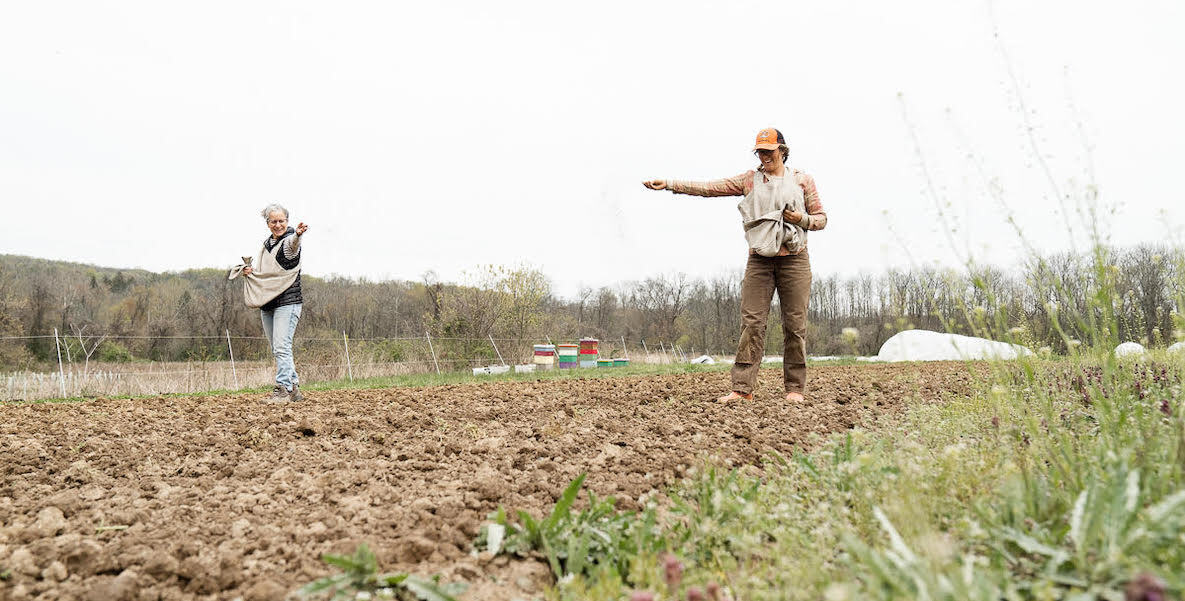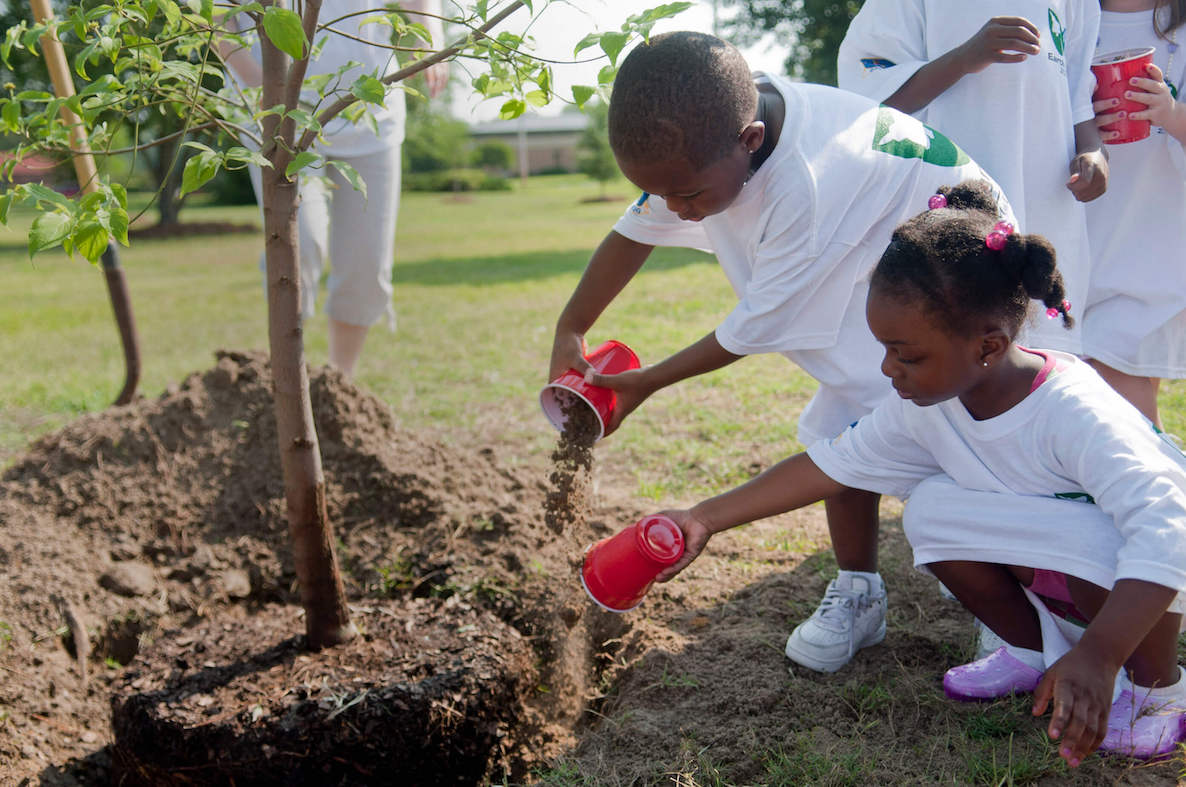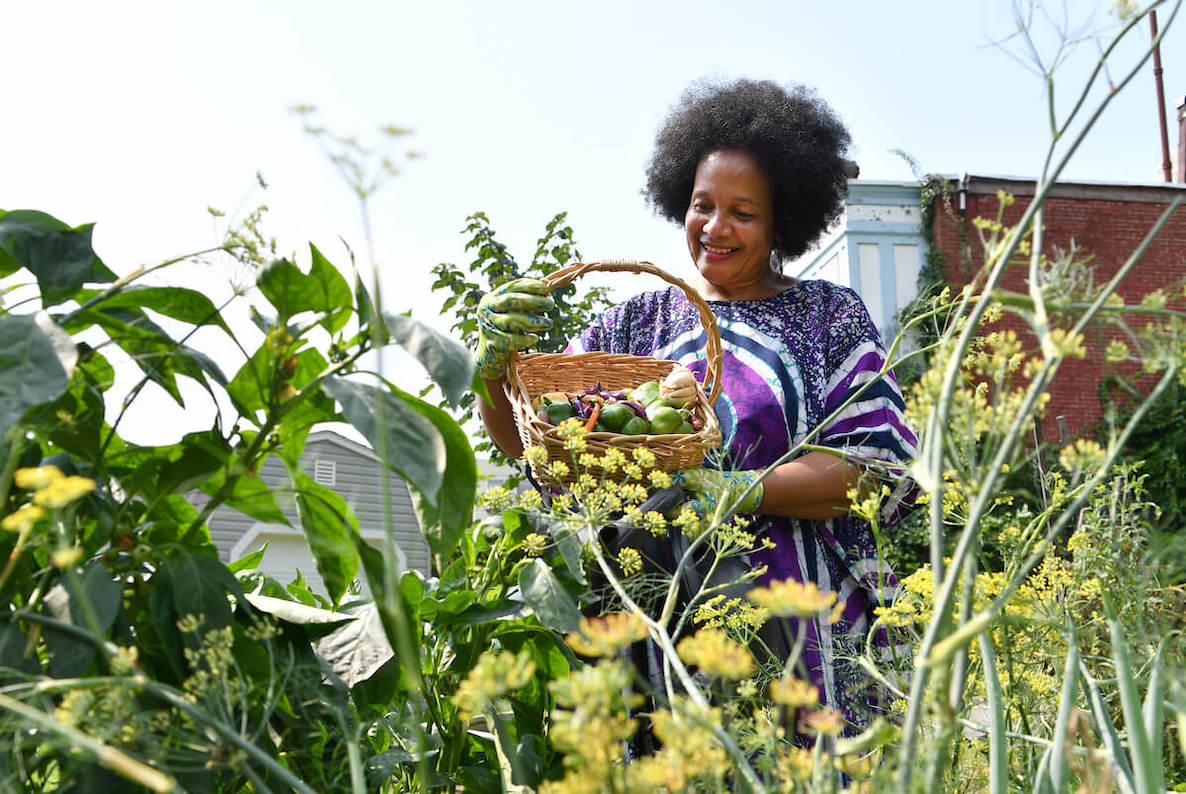When former costume designer Heidi Barr looks back on her work designing outfits for numerous Philadelphia dance productions, she doesn’t just remember the careful hours she spent selecting fabric colors and patterns that enhanced a dancer’s performance or the way sequins and tulle sparkled under stage lights.
She mostly remembers the waste her job created.
Costume after costume was stripped from the performers and shoved into a cluttered, production company closet. Many were thrown away after a short run of dance performances. Barr’s beautiful designs were appreciated for a week or so, and then became waste.
Fabric for goodShop more
Barr began looking for ways to apply her skills as a textile artist that didn’t generate so much waste. She had already been transitioning toward eating more sustainable, locally grown foods and in 2012, while working as a shareholder at the urban farm Henry Got Crops, she started thinking about the connection between fabric and food.
“My products are designed specifically for that intersection of food and fabrics,” Barr says. “Everything I make is specifically designed for replacing single use and plastic disposables in the kitchen, in the garden, and in the dining room.”
Whether it be in the kitchen, in a garden or in a store, single use plastics and other disposables abound. Barr realized that many of these items—plastic grocery bags, paper napkins, paper coffee filters—could be replaced with reusable items made from clothes.
At the same time, she noticed some modest monetary needs at urban farms were going unmet. She envisioned creating a line of reusable kitchen textiles constructed from reclaimed cloth and selling them to support urban farms.
“My products are designed specifically for that intersection of food and fabrics,” Barr says. “Everything I make is specifically designed for replacing single use and plastic disposables in the kitchen, in the garden, and in the dining room.”
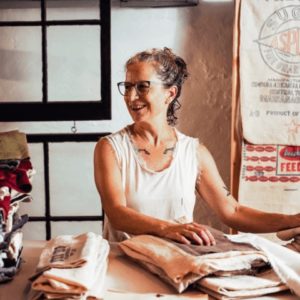
Discovering More Sustainable Textile Crops
Her business, The Kitchen Garden Series, is now profitable and her full-time job and her products are used by some of Philly’s top chefs including Ari Miller, co-owner and chef at Musi BYOB, and by Judy Wicks, environmental activist, author and founder of the White Dog Cafe.
Ten percent of the proceeds from her business are donated to support the urban farms Barr works with, Henry Got Crops in Roxborough and the East Park Revitalization Alliance in Strawberry Mansion.
As her business grew, Barr still wasn’t satisfied that she was doing enough to fulfill her environmental mission, because she wasn’t able to reclaim enough men’s dress shirts and vintage flour sacks to meet her needs. She started sourcing linen to make her products, but when she looked for a domestic provider, she couldn’t find one.
Instead, she started buying linen from a mill in Lithuania, which came with its own environmental problems. Next to oil, the fashion and textile industries are two of the biggest polluters on earth. Over 10 million tons of textiles clog U.S. landfills and synthetic fabrics, like polyester, are made from petroleum products, including oil and coal. These textiles also shed microplastics—contaminating oceans and poisoning sea life with each wash. The fact that many textiles are shipped thousands of miles to their final destinations only adds to their already enormous carbon footprint.
Local flax production Delve Deeper
Currently, a crop of flax is grown each year as part of a historical re-enactment at the Landis Valley Village and Farm Museum in Lancaster, but there are no longer growers using the crop to create spinnable fibers for linen.
“It was a traditional crop here,” Barr says. “It’s not indigenous but it grows well in this climate. It was a strong industry.”
“I think when people hear, ‘oh, you’re going to grow flax and process it into linen,’ it sounds crazy and hard, but it’s not. None of it is,” Barr says. “Everybody can grow a lot of flax in their backyard if they want to.”
What’s more, Barr learned that several organizations were already trying to encourage people to think of locally grown textiles in the same way that they might think of locally grown produce.
The nonprofit Fibershed Project, which was started in 2010 in California, sprung up to support local fiber and dye growers by encouraging people to buy clothes made of materials sourced from a region no more than 150 miles from their homes.
“They Took to the Field and Spread the Flax Seed”
To create something similar near Philadelphia, Barr needed land and knowledge of how to grow textile crops, such as flax. That’s something Emma Cunniff, owner of Kneehigh Farm in Pottstown, could provide.
Like Barr, Cunniff had spent years debating what she could do to thwart the textile industry. While her farm primarily focuses on growing vegetables (she was “knee-deep in tomato season” during our interview), she grew a small amount of indigo, a plant typically used to dye popular clothing items, like blue jeans, in 2019.
“If we were to grow, like food, smaller portions of sustainably grown fiber then we wouldn’t be polluting our waterways. We won’t be contributing to climate change from so many chemicals and fertilizers,” Cunniff says.
A mutual friend and grower introduced Barr and Cunniff, who talked for two hours in their first call about farming, textiles and sustainability and emerged with the idea to plant an eighth of an acre of flax to see if the crop could again be produced and spun into linen in Pennsylvania.
“Look down at your shirt,” Cunniff says. “If you’re wearing a natural fiber, you can see every single strand. Even if it’s machine woven or knitted.”
They bought seeds from Landis Valley Farm and in April, right around Earth Day, they took to the field and spread the flax seed. The crop blossomed in time for the summer solstice in June. Little blue, five-petaled flowers dotted the land. During this time, Barr and Cunniff hosted a socially distanced dinner in the fields to help fundraise for the costs of the project and to raise awareness about the importance of natural fibers.
“When you’re wearing natural fibers you’re avoiding putting toxic chemicals in your body … we have all these synthetic, crazy plastic fibers and a lot of people don’t realize what their clothes are made of,” Cunniff says. “Look down at your shirt. If you’re wearing a natural fiber, you can see every single strand. Even if it’s machine woven or knitted.”
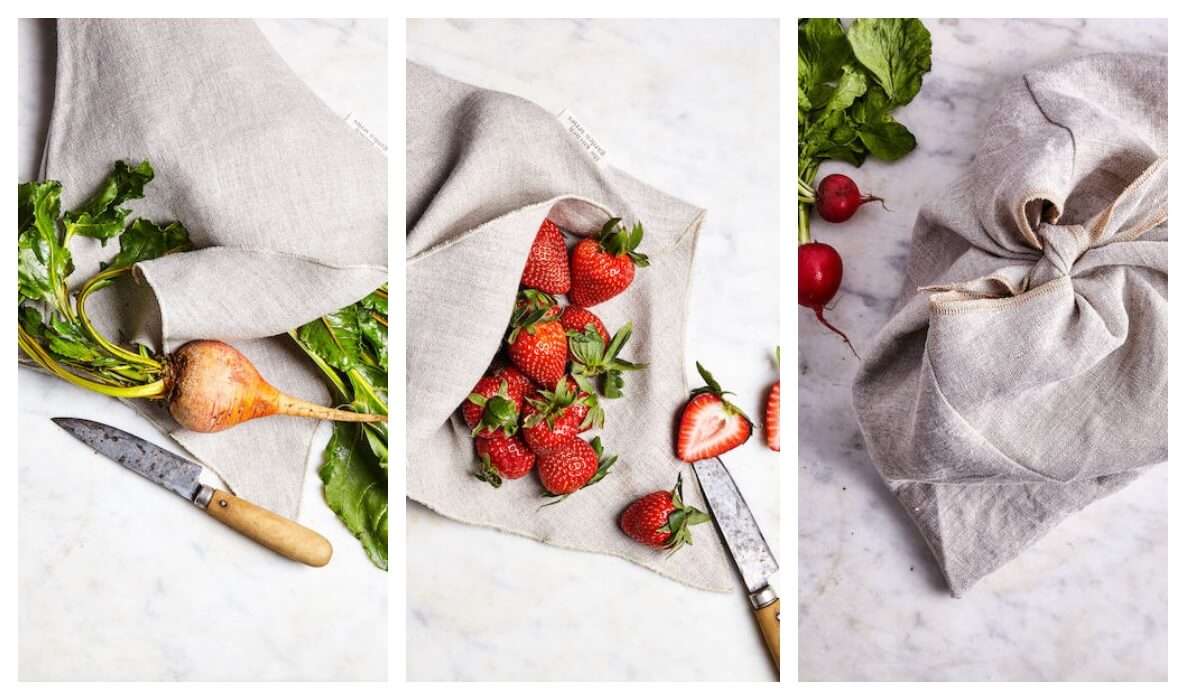
By the end of July, Cunniff and Barr were again in the field harvesting their first flax crop, a process they found to be particularly labor intensive. The roughly three foot tall plant has to be pulled up from the ground by its roots before being laid out in the field to dry. “The harvest is backbreaking. It’s very hard work,” Barr says. “I certainly am in awe of the sheer labor it takes to literally pull yards of cloth from the earth.”
Volunteers helped them for part of the process. One day, 15 people showed up to help them pull the plants from the ground.
Huge Growing Potential In an Urban Environment
This year, Barr and Cunniff have been focused on learning the crop and seeing if it’s viable for growth in Pennsylvania and raising awareness of the use of natural fibers in clothing and textiles. Their efforts have been funded through donations on The Kitchen Garden Series site.
Barr has commissioned a woodworker to build traditional processing tools to turn the plant into spinnable fiber. She plans to work with handspinners and hopes to have enough fabric for a tablecloth or wall hanging. She jokes that they’ve spent the summer making “$1,000 napkins.”
“It’s totally a learning experience. For us, it was just learning how the crop grows,” Barr says.
While they don’t plan to profit off of growing flax this year, the project has taught Cunniff and Barr that flax has potential to be a staple crop for urban agriculture.
They were able to grow their eighth of an acre without fertilizer or irrigation—a fact that could make the crop ideal for urban growers. Now Barr is working with folks at the East Park Revitalization Alliance to see if flax could be introduced as one of their crops.
Support responsible textilesDo Something
“It has a huge potential for being grown in an urban environment where the soil has been contaminated, like around the refineries in Philly,” Cunniff says.
Barr and Cunniff have also been contacted by people offering land for them to continue to grow flax. While their long-term goals for the flax project are still a bit of a moving target, they hope to continue growing and to show people that it is possible to have a strong, local textile supply chain.
“I think when people hear, ‘oh, you’re going to grow flax and process it into linen,’ it sounds crazy and hard, but it’s not. None of it is,” Barr says. “Everybody can grow a lot of flax in their backyard if they want to.”
Flax fields at Kneehigh Farm | Photo courtesy Zoe Schaeffer


